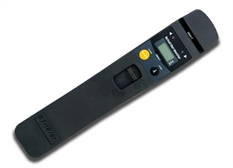OFDA Solutions for Reliable Fibre Quality Assessments
OFDA Solutions for Reliable Fibre Quality Assessments
Blog Article
Crucial Features to Search For in Optical Fiber Testing Equipment
When examining optical fibre testing equipment, several important functions call for mindful factor to consider to make sure optimal efficiency and dependability. Compatibility with existing industry criteria boosts capability, while sophisticated dimension abilities, including TDR and OTDR screening, offer crucial understandings right into network honesty. Comprehending these attributes will lose light on just how to choose the appropriate tools for your particular demands.
Precision and Precision
Precision and accuracy are vital parameters in the assessment of optical fiber testing equipment. These two qualities guarantee that dimensions show the true performance of fiber optic systems, which is important for reliable network installment, maintenance, and troubleshooting. Accuracy refers to the nearness of a measured worth to the actual value, while precision represents the repeatability of dimensions under unchanged problems.
When picking optical fiber screening equipment, it is essential to consider instruments that provide high accuracy and precision to minimize mistakes in data interpretation. Devices such as optical time-domain reflectometers (OTDRs) and power meters should have calibration mechanisms to guarantee regular performance over time. Furthermore, the requirements supplied by suppliers need to detail the tools's measurement unpredictability, which directly influences the integrity of test results.
Additionally, the efficiency of optical fiber testing devices can be affected by ecological factors, such as temperature and moisture. As a result, selecting tools designed to reduce these variables will enhance dimension integrity. Finally, purchasing optical fiber testing equipment with durable precision and precision features is essential for keeping ideal network efficiency and guaranteeing the stability of fibre optic communications.

User-Friendly Interface
The efficiency of optical fibre testing tools is not only established by its accuracy and accuracy; an user-friendly interface plays a considerable role in enhancing operational efficiency. A properly designed user interface simplifies the communication between the service technician and the tools, allowing for a much more instinctive understanding of complicated features.
Secret features of an easy to use user interface include clear navigating food selections, rational formats, and easily accessible controls. These aspects enable service technicians to carry out tests swiftly without comprehensive training, minimizing the possibility of user mistake - ofda. Furthermore, visual indicators such as development bars, informs, and graphical representations of information can substantially enhance the individual experience by providing instant feedback on the testing process.
Furthermore, adjustable setups can additionally enhance procedures by allowing users to readjust parameters according to specific testing needs. This versatility not only saves time but additionally guarantees that the devices meets varied application requirements.
Including aid functions, such as tooltips and detailed handbooks, into the interface can better empower individuals, advertising self-sufficiency and self-confidence in operating the devices. Ultimately, a straightforward interface is necessary for optimizing the possibility of optical fibre testing devices, resulting in much more reliable and efficient screening outcomes.
Portability and Longevity
Transportability and resilience are crucial characteristics of optical fibre testing equipment, making certain that it can withstand the roughness of numerous settings while remaining easy to transport. Specialists typically work in diverse settings, from telecoms hubs to remote setups, making it important that testing devices are lightweight and compact (ofda). Equipment made with transportability in mind usually includes ergonomic handles and cases that promote easy motion, hence improving functional effectiveness on-site
Resilience is similarly crucial, as optical fibre screening devices is commonly exposed to severe conditions, consisting of temperature level variations, dampness, and physical impacts. Gadgets created with tough materials such as strengthened plastics or metal real estates are better matched for these atmospheres, decreasing the danger of damage during use and transport. Furthermore, tools you could try these out with water and dust resistance scores, such as IP scores, guarantees reliable performance in tough problems.
Compatibility With Specifications
Making sure compatibility with industry requirements is crucial for optical fibre screening tools, as it straight influences the integrity and credibility of examination results. Optical fiber networks go through rigid performance standards established by various companies, consisting of the Telecommunications Sector Association (TIA) and the International Electrotechnical Compensation (IEC) Evaluating equipment must adhere to these requirements to make sure that measurements are regular and equivalent throughout various systems and environments.
When choosing optical fibre screening tools, individuals should validate that the device satisfies relevant standards relevant to their particular application, such as those pertaining to depletion, bandwidth, and crosstalk. Tools that is certified with well established criteria not only aids in accomplishing exact outcomes yet additionally promotes interoperability amongst devices additional info from different suppliers.
In addition, compatibility with criteria makes certain that the equipment can be made use of in regulative compliance scenarios, which is important for jobs in fields such as telecoms, aerospace, and army applications. Therefore, spending in optical fibre testing devices that straightens with present industry criteria is an essential aspect of preserving top quality guarantee and achieving ideal network efficiency.
Advanced Dimension Capabilities
Advanced measurement capacities are a specifying attribute of contemporary optical fiber testing devices, permitting comprehensive analysis of network performance. These capabilities make sure that technicians can examine vital criteria such as signal loss, dispersion, and data transfer, which are crucial for keeping optimal interaction effectiveness.
One trick facet is the capacity to conduct time-domain reflectometry (TDR) and optical time-domain reflectometry (OTDR) examinations. These techniques allow customers to determine faults, determine the size of fibres, and identify the place of problems with remarkable accuracy - ofda. Furthermore, sophisticated devices typically includes the capacity to gauge optical power levels, assisting to evaluate the general health of the network and make sure conformity with the called for specs.
In addition, some testing devices provide sophisticated formulas for real-time analysis, making it possible for quicker diagnosis and troubleshooting. In final thought, investing in optical fibre testing equipment with sophisticated measurement abilities is important for ensuring network reliability and performance in today's demanding telecommunications landscape.
Final Thought

Report this page